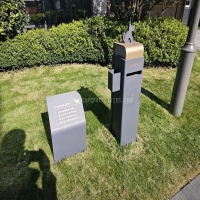Welcome to the website for landscape facilities products and knowledge.
What are the implications of using heat-mapping surfaces in landscape tables for user interaction?
Heat-mapping surfaces in landscape tables are revolutionizing user interaction by providing intuitive, data-driven insights into how people engage with physical and digital interfaces. These surfaces visually represent user activity through color gradients, highlighting high-traffic areas and revealing behavioral patterns.
One key implication is enhanced usability. By analyzing heat maps, designers can optimize table layouts, ensuring frequently used features are easily accessible. This leads to a more seamless user experience, reducing frustration and improving efficiency.
Another benefit is real-time feedback. Heat-mapping surfaces allow for dynamic adjustments during collaborative sessions, enabling teams to adapt workflows based on live data. This is particularly valuable in brainstorming or decision-making scenarios where interaction patterns evolve rapidly.
Moreover, these surfaces bridge the gap between physical and digital interactions. Users can interact with data tangibly, fostering deeper engagement and understanding. The visual nature of heat maps also simplifies complex data, making it accessible to non-technical audiences.
However, challenges like privacy concerns and data overload must be addressed. Proper implementation ensures that heat-mapping enhances rather than disrupts the user experience.
In conclusion, heat-mapping surfaces in landscape tables offer transformative potential for user interaction, blending aesthetics with functionality to create smarter, more responsive environments.
Related search:

Recommendation
Outdoor cat and dog feces trash can; Community pet trash can; Metal multi-color design